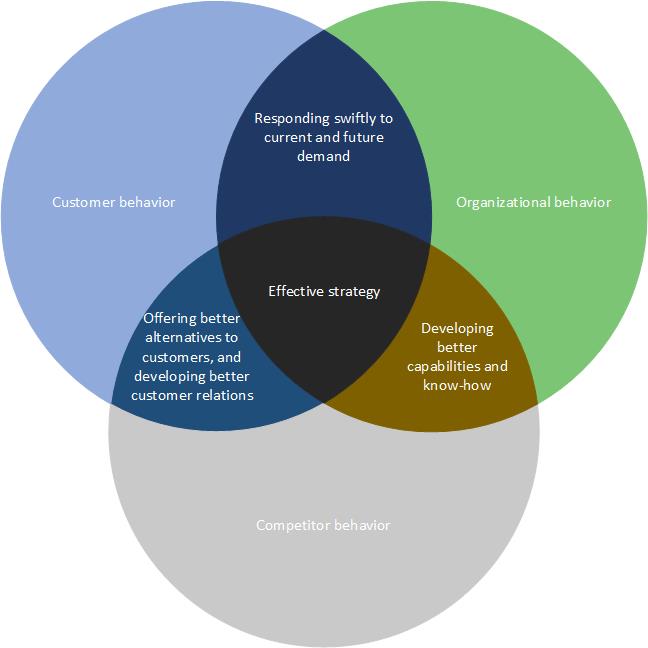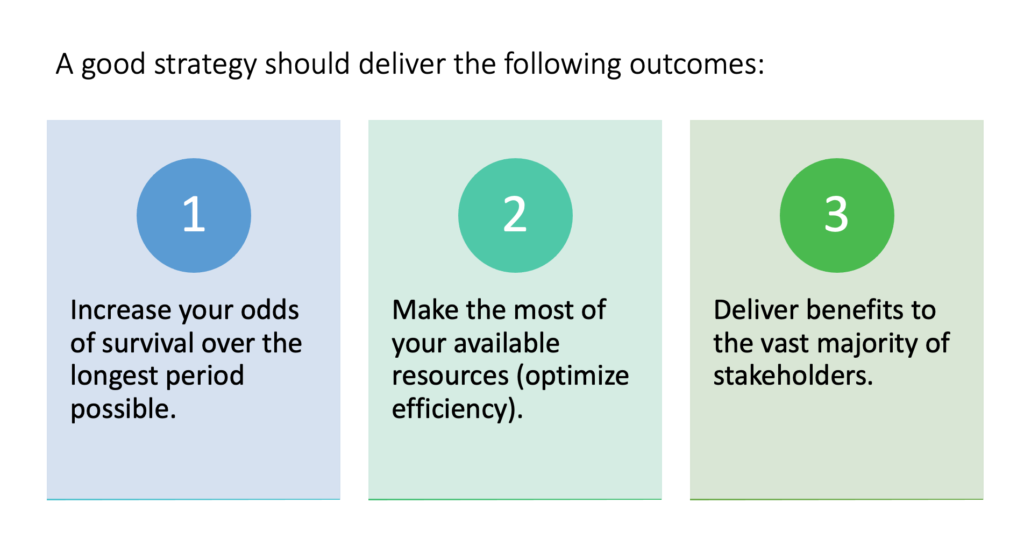Human behavior ultimately determines the outcome of any strategy. Therefore, as a leader, your capacity to influence behavior will make or break your strategy. If you are at war, one of your main objectives should be to drive your opponent to surrender. If you are leading a business, your objective should be to drive your customers to buy your products, ideally again and again. This is in addition to the objective of preventing your competitors from encroaching on your market share. All of those are in fact behavioural objectives that are critical in any strategy.
In practice, strategies fail or deviate from their intended outcomes because of the assumption that human behavior is linear. It is not. It is extremely complex. Realistically speaking, it is nearly impossible and impractical to try to cover all the intricate factors that have an effect on behavior. That is why a leader cannot be effective without the ability to influence others and move them in the right direction.
Put simply, every strategy involves behavioural change. This spans behaviours of various actors, including:

- The collective behavior of your team: when it comes to the collective behavior of your team, your strategy should be about enablement. In practice, this cannot happen without enabling each individual to deliver their best performance.
- The behavior of your customers: ideally, you would want your customers to pay a reasonably good price for your products and services. Moreover, you would like your customers to spread out a good word about the quality of your services. This can hardly be achieved without an in-depth and broad understanding of customer needs, contexts, requirements, and preferences.
- The behavior of your competitors: in reality, the vast majority of games are not zero-sum. This means that much of the concern regarding competitors is overdue. Nonetheless, your strategy should be clear about how you will establish a dominant position in the market and prevent your competitors from eating up into your market share. When it comes to your competitors, your strategy should involve either an element of alliance (without illegal collusion) or disablement.
Viewing strategy from a behavioural lens removes much of the confusion about what strategy is and how it should be developed. In addition to looking at the behavior of each different actor separately, the relationships between different behaviours are equally important. Things of the same genre are linked, including behavior. This means that strategy should be about predicting in advance not only the behavior of each actor, but how the behavior of each actor influences the behaviours of other actors. This implies that much like chess, developing a strategy relies on your ability to think many steps ahead. With more steps, complexity increases, and hence dealing with complexity is also an essential part of strategy development.
Diversity pays off when developing strategy
Given all of this, it becomes clear that strategy is not an act of going on a retreat every few months to come up with a great strategic plan. Rather, it is a daily act of dealing with complexity, uncertainty, and ambiguity. Almost all of those adverse factors stem from human behavior. For those reasons, the strategy development session should not only involve board members and executives, but should also include other actors with keen understanding of human behavior in the industry in question. Moreover, the best strategies are usually developed by diverse teams that include people with critical thinking skills as well as empathy.
What is the outcome?

A carefully crafted strategy should ideally deliver the following outcomes:
- Increase your odds of survival over the longest period possible. If there are two strategic options wherein option A will increase your odds of survival by 30% over a timeframe of 5 years, and option B will increase your odds by 70% over a timeframe of 9 years, you should choose option B. Whether you want to give more weight to odds or the length of survival time is left to you discretion.
- Make the most of available resources (optimize efficiency). Strategies that increase resource efficiency (in terms of time, energy, and money) should be preferred.
- Deliver benefits to the vast majority of stakeholders. Strategies that deliver more benefits to more stakeholders should be preferred.
In fact, those are the three critical measures upon which any strategy should be appraised.
At Barazi Consulting, our team of experts in behavioural sciences, network science, complexity science, psychology, and mathematics, work with you to deliver the best strategy there is in your given situation, as measured by the three criteria above. We will examine in depth the behavior in your organization, the behavior of your customers, and that of your competitors, and then deliver a holistic strategy taking all of those different actors into account.
We will develop with you a strategy that includes the following three pillars:
- A detailed and comprehensive plan to enable your team to deliver their best performance, beginning from the bottom up.
- A detailed and comprehensive plan to change the behavior of your customers, which will increase your revenue and customer retention.
- A detailed and comprehensive plan to deter your competitors from attempting to take your market share. This includes both a defence and an offence plan.
Our evidence suggest this approach is both effective and efficient in that it maximises the impact of strategy and reduces strategy development time. You can book a free non-binding strategy consultation session so that we can guide you further. We will be happy to help.